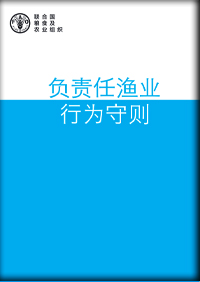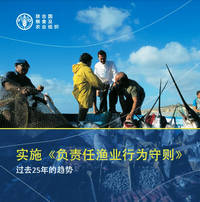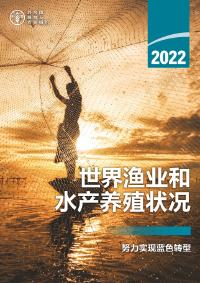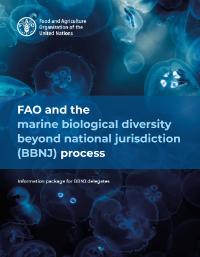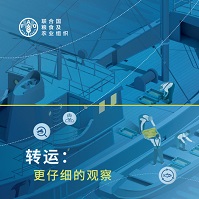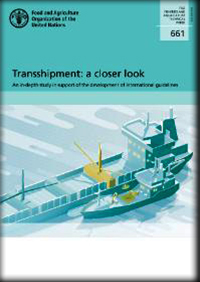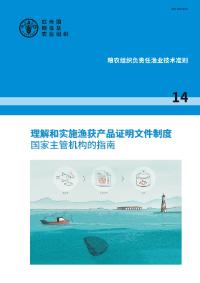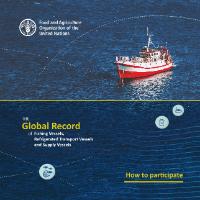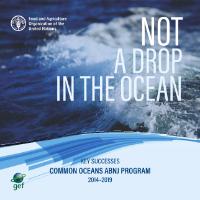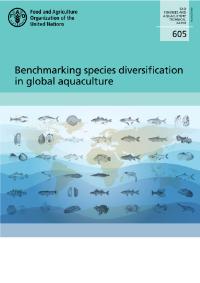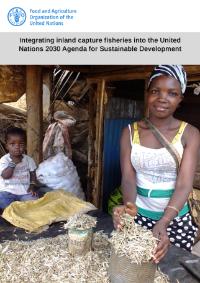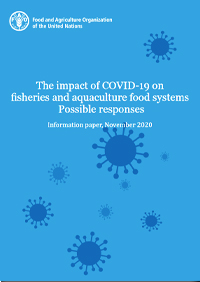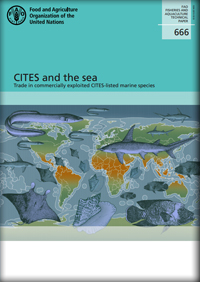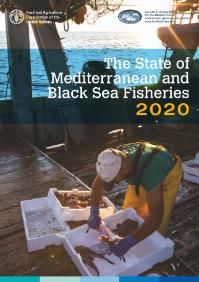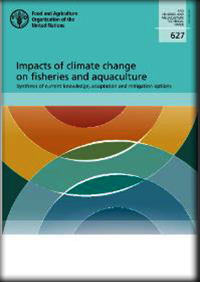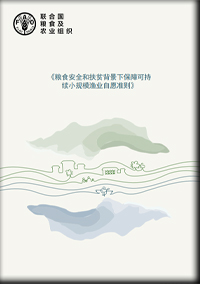主要出版物
自古以来,捕鱼一直是人类赖以生存的主要食物,并为从事这项活动的人们提供了就业和经济利益。丰富的水生资源被认为是自然的无限恩赐。但是,随着第二次世界大战后知识的增加和渔业的蓬勃发展,人们意识到水生资源虽然可再生,但不是无限的,如果对营养的贡献,就必须加以管理,这一神话已经消失了。 ,持续增长的世界人口的经济和社会福祉将得以维持。七十年代中期广泛采用专属经济区,经过长时间的讨论,1982年通过了《联合国海洋法公约》,为更好地管理海洋资源提供了新的框架。新的海洋法律制度赋予沿海国在其专属经济区内管理和使用渔业资源的权利和责任,这些专属经济区涵盖了全球约90%的海洋渔业。扩大国家管辖范围是朝着有效管理和可持续发展渔业迈出的必要但不足的一步。由于缺乏,经验,财力和物力,许多沿海国继续面临严峻挑战,它们试图从其专属经济区内的渔业中获取更多利益。
捕鱼和水产养殖为全世界人民、当代和后代提供了食物、就业、贸易和经济福利的重要来源,因此应以负责任的方式进行。 《负责任渔业行为守则》(《守则》)为支持可持续开发和生产水产生物资源的负责任操作制定了原则和国际标准,适当考虑生态系统的养护和生物多样性,并认识到渔业在营养、经济、社会、环境和文化方面的重要性。《守则》通过25年之后,今天仍然同1995年一样具有重要意义。 这本小册子简要介绍了《守则》的目标,以及过去25年来建立在《守则》基础上并支持实施其广泛条款的文书和准则的框架。这本小册子还通过粮农组织成员报告的其实施情况观察到的一些趋势提供了见解。
努力实现蓝色转型 - 2022年版《世界渔业和水产养殖状况》的发布适逢联合国实现全球目标行动十年、联合国海洋科学促进可持续发展十年和联合国生态系统恢复十年的启动。本报告介绍了如何通过蓝色转型整合和支持这些活动及其他具有同等重要性的联合国活动,如2022国际手工渔业和水产养殖年。蓝色转型是新版联合国粮农 组织《2022-2031年战略框架》的一个重点领域,旨在加快实现《2030年可持续发展议程》在粮食和农业领域的目标。蓝色转型的概念产生于2021年2月召开的粮农组织渔业委员会(渔委)第 三十四届会议,特别是经粮农组织所有成员商定和批准的《可持续渔业和水产养殖宣言》(《宣言》)。该宣言呼吁支持“21世纪渔业和水产养殖不断变化的积极愿 景,使该部门对消除贫困、饥饿和营养不良的贡献得到充分认可。”在此背景下,此版《世界渔业和水产养殖状况》的第1部分回顾了全世界渔业和水产养殖的状况,而第2部分和第3部分则专门讨论蓝色转型及其关于水产养殖的集约化和扩大、 改进渔业管理、创新渔业和水产养殖价值链的支柱。蓝色转型强调需要在未来几年启动或加快前瞻性的果敢行动,以实现《宣言》的目标并支持《2030年可持续发展议程》。第4部分涉及当前影响较大的新问题(新冠疫情、气候变化和性别平 等),这些问题要求充分考虑转型步骤和预备措施,以确保可持续、高效和公平的渔业和水产养殖,该部分最后根据预测对未来趋势做出展望。《世界渔业和水产养殖状况》旨在向广大受众提供客观、可靠和最新的信息,其中包括政策制定者、管理者、科学家、利益相关者,以及关注渔业和水产养殖部门的所有人。
FAO is actively engaged in areas beyond national jurisdiction (ABNJ) through projects and initiatives for which it provides assistance to Member Nations and relevant international organizations. This document presents information on the work of FAO that is relevant to the BBNJ process, including ongoing processes and initiatives, and lessons learned, which may be informative and useful for BBNJ Delegates and others. This information may also be a useful indication of areas where FAO may assist Member Nations in the implementation of the future international legally binding instrument (ILBI).
关于转运的深入研究回答了渔委会和国际社会关于转运可能具有把非法、不报告和不管制(IUU)来源的鱼引入销售链的风险的持续关切。本手册介绍了这个研究的关键特征:包括采用的方法和主要结果。
An in-depth study in support of the development of international guidelines - Transshipment is a widespread practice in marine capture fisheries, that has recently been associated with a possible risk of introducing catches derived from illegal, unreported and unregulated (IUU) fishing into the supply chain. This in-depth study was carried out in order to shed more light on the practice and make recommendations to inform future discussions on the development of international guidelines for the regulation, monitoring and control of transshipment. The report presents a background to the study, its approach and methodology, the key findings including possible elements of the guidelines, and discusses the main issues from the perspective of the risk of transshipment in supporting IUU fishing.
国家主管机构的指南 - 本文件包含CDS的法律和政策背景章节、介绍现行制度的特点和要求以及关于如何处理CDS的信息要求和确定国家关键数据要素的指导意见。 最后,本文件提供了一系列评估有关国家能力和协调进程的工作,包括信息管理和交流。
Key successes Common Oceans ABNJ Program 2014-2019 - To contribute to meet these goals, the Common Oceans ABNJ Program brought together global stakeholders and partners to promote the sustainable use of fisheries and the protection of marine biodiversity in the ABNJ. The Program, funded by the Global Environment Facility (GEF) and led by the Food and Agriculture Organization of the United Nations (FAO), involved the United Nations Environment Programme (UNEP) and the World Bank Group (WBG), as well as Regional Fisheries Management Organizations (RFMOs) and other intergovernmental organizations, national governments, the private sector, civil society and academia. This report presents the results obtained by the Common Oceans ABNJ Program between 2014-2019. It highlights the value, importance and benefits of sustainably managing fisheries and biodiversity conservation in the ABNJ, and how the collateral impact of fishing is less harmful to the marine environment now than when the program started out in 2014.
While diversified aquaculture could reduce both biological and financial risks, the private sector may lack incentives to diversify the species composition of aquaculture production because developing or adopting new species tends to be costly and risky. Conversely, concentrating on the most efficient species can benefit from economies of scale in both production and marketing. With ever-growing concerns over climate change, disease outbreaks, market fluctuations and other uncertainties, species diversification has become an increasingly prominent strategy for sustainable aquaculture development. Policy and planning on species diversification require a holistic, sector-wide perspective to assess the overall prospect of individually promising species that may not be entirely successful when competing for limited resources and markets. The historical experiences of species diversification in global aquaculture can provide guidance for the assessment. This paper develops a benchmarking system to examine species diversification patterns in around 200 countries for three decades to generate information and insights in support of evidence-based policy and planning in aquaculture development. The system uses “effective number of species” (ENS) as a diversity measure that is essentially equivalent to, yet more intuitive than, the widely used Shannon Index. A statistical model is established to estimate a benchmark ENS for each country and construct a benchmarking species diversification index (BSDI) to compare a country’s species diversification with global experiences. Key results are presented and discussed in the main text; and more comprehensive results are documented in Appendix II. The benchmarking system can be used in foresight analyses to help design or refine future production targets (including species composition) in policy and planning for aquaculture development; an example is provided in Appendix I to help practitioners better understand and utilize the system.
本《粮食和农业水生遗传资源保护、可持续利用和开发全球行动计划》(GPA)是粮农组织应粮食和农业遗传资源委员会成员的要求制定的,以应对粮食和农业水生遗传资源(AqGR)状况第一次全球评估中确定的需求和挑战。该协议是在与各区域广泛协商后制定的,经委员会认可后,由粮农组织成员在粮农组织理事会第168届会议上正式通过。《全球行动计划》是自愿的,不具约束力,旨在促进对AqGR的有效管理,确保其对粮食安全和可持续发展以及减轻贫困做出重大贡献,其目标是水产养殖的所有利益相关者,重点是资源管理者和政策制定者。《全球行动计划》有两部分,第一部分介绍并确定了AqGR对可持续水产养殖和未来粮食安全的背景和重要性,。第二部分确定战略优先事项,并建议在四个优先领域的行动:i) 特性、清单和监测;ii) 保护和可持续利用;iii) 发展水产养殖的AqGR;以及iv) 政策、机构、能力建设和合作。
Integrating inland capture fisheries into the United Nations 2030 Agenda for Sustainable Development
This brief presents an overview of the inland capture fisheries sector in the Southern African Development Community (SADC), describes historical and current trends, highlights management successes and failures, identifies common constraints and opportunities, and provides recommendations to ensure that the full potential of the sector is realised. Inland capture fisheries in the SADC region are estimated to support over a million people and contribute significantly to food and nutrition security, employment, livelihoods, and human welfare. They also provide a range of important socio-cultural and ecosystem services that contribute directly to the Sustainable Development Goals (SDGs). These benefits are particularly important in a region that faces a number of dire socioeconomic challenges including extreme poverty, acute malnutrition, and a lack of alternative livelihoods.
The purpose of this information paper is to update information on the COVID-19 pandemic’s impact on the fisheries and aquaculture sector and the measures taken, to inform on the ongoing impact on the fisheries and aquaculture food systems, and responses from seafood providers and governments to counteract the negative impacts on seafood chains.
Fish and fish products are amongst the most highly traded food items in the world today, with most of the world’s countries reporting some fish trade. This assessment of commercial trade in CITES-listed marine species occurs within a broader context of globalization and a more general rapid expansion of the international trade in fish and fish products. It summarizes ten years (2007–2016) of trade in a subset of commercially exploited marine taxa listed in CITES Appendix II. We examine both CITES trade data reporting processes (including information on the practical elements of reporting by CITES Parties) and analyse CITES trade records. The analysis shows how, for Appendix II CITES-listed marine species, the overall number of direct export transactions reported by CITES Parties has increased sevenfold during 1990–2016 and how trade for each CITES-listed marine species sub-group has changed through time. An assessment is made, with assistance from species and trade experts, on the strengths and challenges of collating and reporting on trade in CITES-listed marine species. Additional datasets of relevance to marine species trade are highlighted, and recommendations for further refining and improving CITES trade reporting for marine species are provided.
This third edition of the State of Mediterranean and Black Sea Fisheries provides a comprehensive overview of the status of fisheries in the region, looking at their main features and trends, in order to better inform their management and better examine current and future challenges that they will face in the near future. The aim of this report is to produce a document that could provide useful analysis and direction for decision-making and future action. In this respect, this publication also represents a convenient source of information for the FAO Committee on Fisheries and offers a practical complement to the data provided in the State of World Fisheries and Aquaculture published by the FAO Fisheries and Aquaculture Department. This volume includes seven chapters divided into two sections: a first part on the status and trends of different aspects of Mediterranean and Black Sea fisheries, including fleet, catches, socio-economic variables and bycatch, and a second part that focuses on the management of Mediterranean and Black Sea fisheries, including an overview on small-scale fisheries. This report is based to a large extent on the most up-to-date data available submitted by GFCM contracting and cooperating non-contracting parties, including information on stock status, national catches, fleet and socio-economic information up to 2018. It is also complemented with information from other sources.
The 2015 Paris Climate Agreement recognizes the need for effective and progressive responses to the urgent threat of climate change, through mitigation and adaptation measures, while taking into account the particular vulnerabilities of food production systems. The inclusion of adaptation measures in the fisheries and aquaculture sector is currently hampered by a widespread lack of targeted analyses of the sector’s vulnerabilities to climate change and associated risks, as well as the opportunities and responses available. This report provides the most up-to-date information on the disaggregated impacts of climate change for marine and inland fisheries, and aquaculture, in the context of poverty alleviation and the differential dependency of countries on fish and fishery resources. The work is based on model projections, data analyses, as well as national, regional and basin-scale expert assessments. The results indicate that climate change will lead to significant changes in the availability and trade of fish products, with potentially important geopolitical and economic consequences, especially for those countries most dependent on the sector.
《粮食安全和扶贫背景下保障可持续小规模 渔业自愿准则》(《准则》)旨在为1995年 的粮农组织《负责任渔业行为守则》提供补 充。其目的是就小规模渔业提出补充性指导 意见,为《负责任渔业行为守则》的总原则 和规定提供支持。因此,《准则》将有助于在 小规模渔业现有重要作用的基础上,进一步提 升其形象和认知度,加强其作用,促使其为全 球、国家层面消除饥饿和扶贫做出贡献。《 准则》还在注重小规模渔民和渔工及相关活 动,包括弱势及边缘化群体的基础上,促进采 用基于人权的方法,支持负责任渔业和可持 续社会、经济发展,造福当代及子孙后代。

